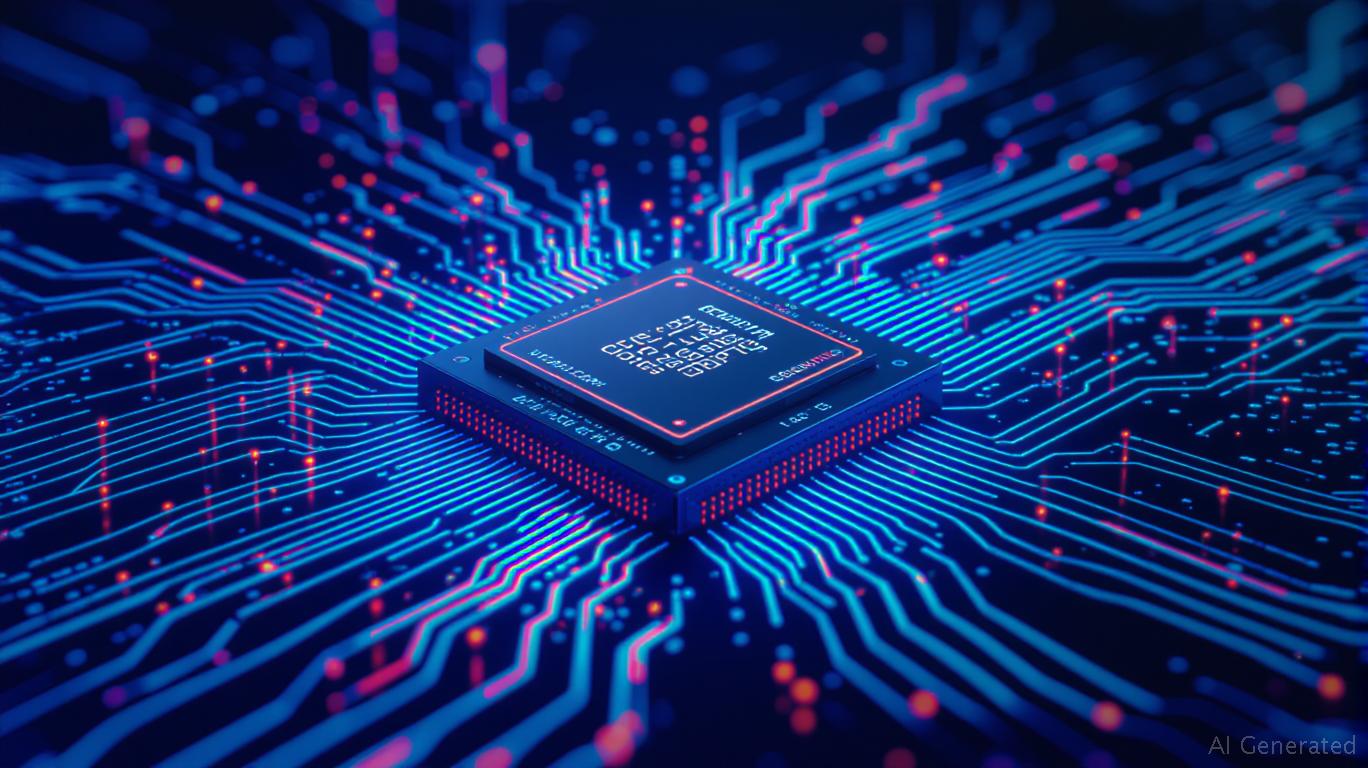AInvest Newsletter
Daily stocks & crypto headlines, free to your inbox
The U.S.-China trade war has escalated into a high-stakes battle over semiconductors, with export controls, tariffs, and supply chain disruptions reshaping the industry. While geopolitical friction has created volatility, it also presents opportunities for investors to identify undervalued semiconductor stocks capable of thriving amid fragmentation. This article explores how to capitalize on the divide by focusing on companies with resilient business models, diversified supply chains, and exposure to less restricted technologies.

The U.S. has tightened its grip on semiconductor exports through refined rules targeting advanced nodes (16/14nm and below), AI chips, and military applications. Key policies include:
- Presumption of Control: Logic chips for data centers at 16/14nm or smaller are now presumed to require licenses unless rebutted.
- AI and Model Weights: ECCN 4E091 restricts exports of advanced AI chips and model weights, curbing China's AI ambitions.
- Military End User Rules: Licenses are mandatory for exports to Chinese military entities under General Prohibition 6.
These measures aim to slow China's technological ascent, but they also create winners and losers. Companies reliant on Chinese fabs or sales to restricted sectors face headwinds, while those with alternatives to U.S. technology or exposure to mature nodes (28nm+) may thrive.
China has retaliated by restricting exports of critical minerals (gallium, germanium) and accelerating its own semiconductor investments via the third National IC Fund. Its strategy combines:
- Hybrid Innovation: Balancing self-reliance in mature nodes with global collaboration on non-sensitive tech (e.g., RISC-V).
- Supply Chain Diversification: Building domestic capacity for chips used in consumer electronics and industrial applications.
However, advanced node production (7nm/5nm) remains constrained by U.S. restrictions on equipment like ASML's EUV lithography machines. This creates an opening for companies with non-U.S., non-China supply chains.
The semiconductor sector is fracturing into two ecosystems:
1. U.S.-Led Ecosystem: Dominated by advanced-node foundries (TSMC, Samsung), AI-focused firms (NVIDIA), and equipment suppliers (ASML).
2. China-Centric Ecosystem: Focused on mature-node chips and AI models using domestically produced hardware.
Investors should prioritize companies that:
- Avoid China's Restricted Markets: Firms with minimal exposure to military or AI chip sales to China.
- Benefit from Diversification: Foundries and equipment makers with facilities in Taiwan, Japan, or Europe.
- Target Underserved Sectors: Companies serving mature-node applications (e.g., automotive, IoT) or non-geopolitical end markets.
ASML's resilience amid U.S. export controls highlights the value of being an irreplaceable supplier. Its EUV lithography machines remain critical for advanced nodes, even as the U.S. restricts their sale to China.
TSMC (TSM): The world's largest foundry has expanded production in the U.S. (Arizona) and Japan, reducing reliance on China. Its mature-node capacity and global customer base make it a defensive play.
ASML (ASML): Controls ~80% of the EUV market, a technology essential for advanced nodes. While China cannot access its latest tools, demand from
and Samsung remains robust.Intel (INTC): Rebuilding its foundry business with U.S.-focused production (Intel 4/3) and a push into mature-node chips. Its partnership with BMW and
signals non-geopolitical growth.Texas Instruments (TXN): Dominates analog chips for automotive and industrial markets, which are less affected by trade barriers. Its high margins and dividend yield offer stability.
ASM International (ASM): A Dutch company supplying equipment for mature-node manufacturing, which remains in demand globally.
The U.S.-China semiconductor war is here to stay, but it's not all doom and gloom. By targeting companies insulated from trade barriers, benefiting from diversification, or serving neutral markets, investors can navigate the crossfire. The winners will be those that adapt to a bifurcated world—where resilience, not just innovation, drives success.
For now, TSMC,
, and stand out as pillars of stability, while Intel's turnaround offers a higher-risk, higher-reward bet. As the tech Cold War intensifies, these stocks could outperform in a landscape where geopolitical friction defines the rules of the game.Delivering real-time insights and analysis on emerging financial trends and market movements.

Dec.17 2025

Dec.17 2025

Dec.17 2025

Dec.17 2025

Dec.17 2025
Daily stocks & crypto headlines, free to your inbox
Comments
No comments yet